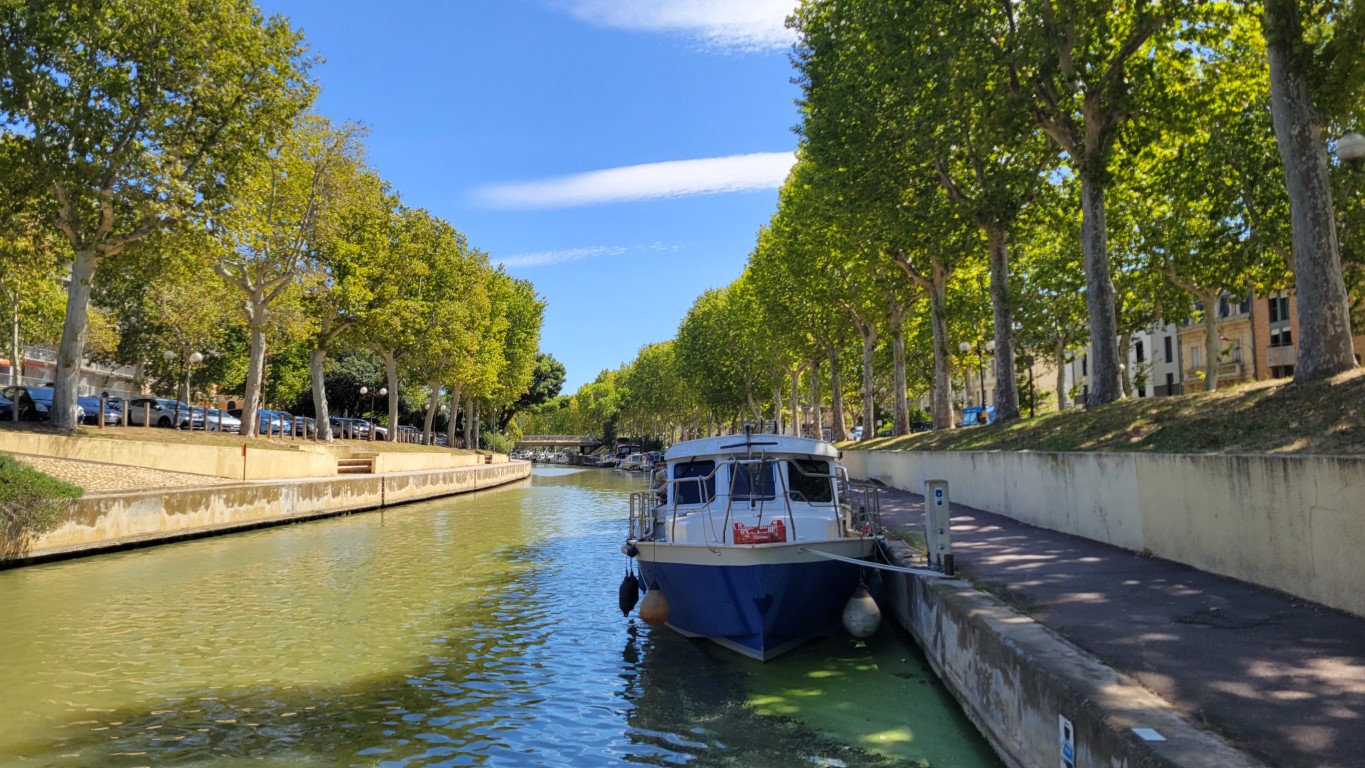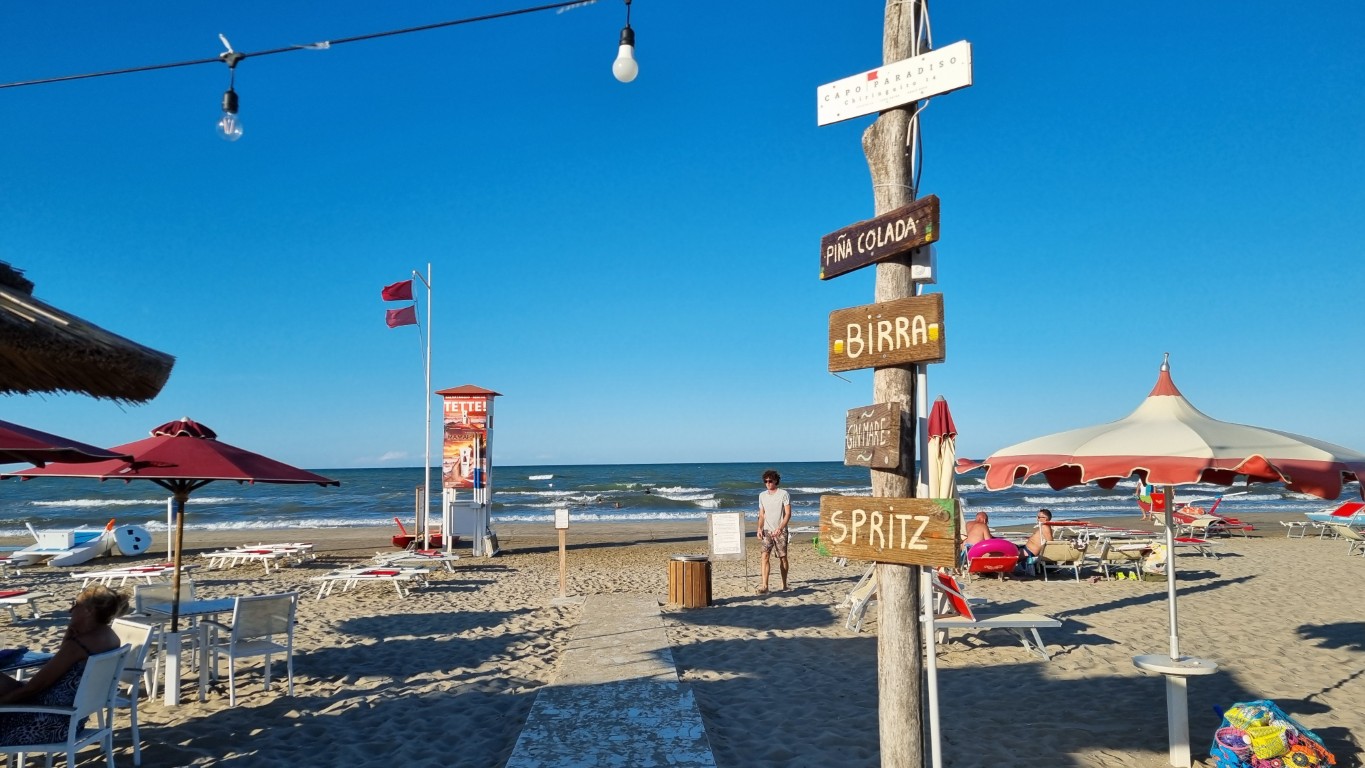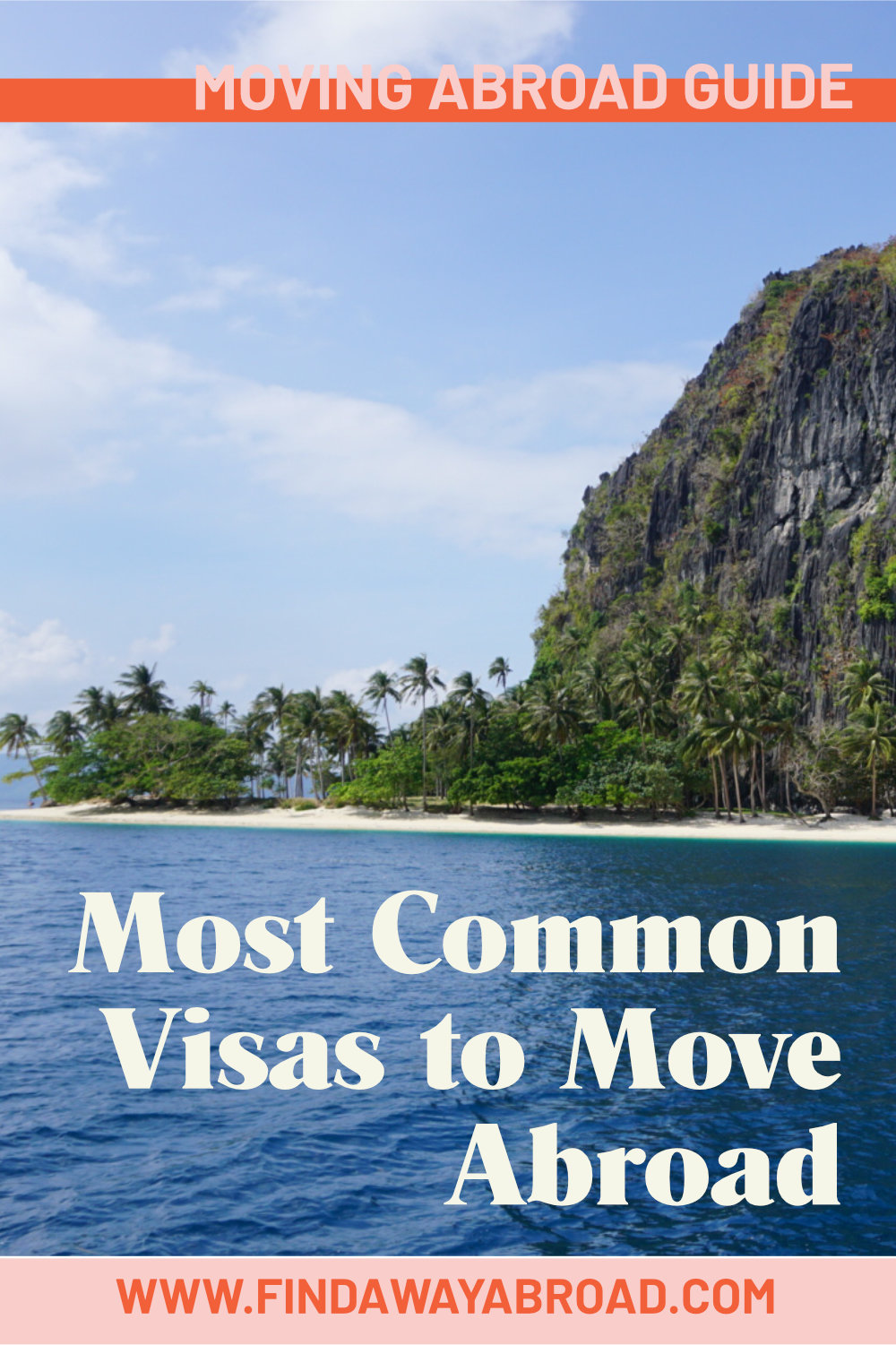I've been writing a lot on our Substack recently about visas. While they're in no way, shape, or form something that I enjoy writing about, they're something we can't avoid (well, usually not).
I previously wrote this post that works as a good introduction to visas if you're new to this world. I recommend pausing here and reading that one before diving into these most common visa types.
If you already have a good understanding of when and why you need a visa, you're ready to continue here.
Just know that while I am skipping short-stay visas (think tourist, transit, and the likes), these visas don't often equal permanent residency. Most countries require you to first get a visa, then apply for temporary residency. After a few years on temporary residency, you can then apply for permanent residency. A few years after that, then you can think about citizenship. The exact timeline varies from country to country.
Short on time? Here's the cheat sheet:
Although there are far more visa options than this in the world, the most common ones to live abroad are:
- Work Visas
- Student Visas
- Working Holiday Visas
- Digital Nomad Visas
- Family Visas
- Retirement Visas
- Investment Visas
Things to Know About Visas
Visas are tough but to live somewhere you love, they’re worth it to figure out. Although there are some ways that you can skip the visa hassle, for most of us living abroad, they're a necessary evil to understand.
Before I dive into the good stuff, there are a few things to know about visas to ensure we're on the same page here:
- Visas aren’t a one size fits all solution. The visa that’s best for me might not be best for you. It’s also really common for you and your partner to be on different visas. So don’t fret, it’s part of the chaos.
- Every country does things a little bit differently. Even if multiple countries offer a digital nomad visa, for example, the requirements for that visa probably differ from country to country. You’ll need to look into the fine print for the country you have your mind set on. This also means that just because the visa type is on this list, that doesn’t mean every country in the world offers it.
- Your nationality matters. I mentioned this in my previous post but just in case you missed it, your nationality REALLY matters when applying for visas. You might be offered something special, you might be required to provide additional paperwork, or, unfortunately, you might not be able to apply.
Let's dive right into the 7 most common visas and a bonus option for those that prefer to skip the struggle.
1. Work Visas

“Work” is the general name but sometimes these are called Business Visas or Skilled Worker Visas. This type of visa gives you the legal right to work in-person in the country.
A vast majority of people I know who are living abroad are on some sort of Work Visa. These are sometimes specific, like an Au Pair Visa, but are more often than not very general and cover a range of industries.
I was on a work visa teaching English in South Korea and Vietnam and my husband is now on a work visa here in Italy.
Essentially, to get this type of visa, you need a job offer. Some countries offer job seeker visas but the majority of countries stick to just a work visa, which requires you to have a job offer BEFORE you move to the country.
The company who is hiring you must be willing to jump some hurdles to get you your visa. To get this visa, you’ll really need to be able to stand out from the crowd and offer something most locals can’t. This is simply because visas are a pain to get not just for you but often for the hiring company as well.
They really need to want you and your skills in order to deal with the process.
While getting a visa to teach English in a foreign country as a native English speaker is pretty straightforward, my husband getting one as a designer in Italy really wasn’t. That said, he was able to leverage his unique experience to showcase himself as an a-typical hire…but in a good way. I’m bringing this up just to let you know that it’s possible, even if challenging.
My best piece of advice here is to think hard about how you can make yourself stand out from the crowd. I go into a lot more detail here on this article about applying for jobs abroad.
2. Student Visas

These could be to study at a university or to study at a language school.
Student visas can be a really smart way to move to another country. Why? Because many countries offer the chance for you to stay in-country after graduation in order to job hunt.
Although this is the long game, if you’re certain you want to live in a specific country and are willing to put in the hours at school, it can really pay off. Just be sure to double check the country you have in mind does offer post-grad options to stay.
It can also be a really smart idea financially to study abroad, especially if you’re coming from somewhere that university or grad school is really expensive, like the US.
You can get a student visa for your undergraduate degree, masters or other grad schools, or even just to study at a language school. And trust me, the best way to learn a language is through immersion so if you’re serious about it, this is a great way to learn.
Sometimes student visas give you the right to work and sometimes they don’t. You’ll need to read the fine print if making an income while you study is a deal breaker for you.
Note that it’s also possible through your university to study abroad for a semester or a year, with them taking care of the paperwork. What I’m referring to here is skipping school in your home country and going straight abroad for the entirety of your studies.
For some inspiration, you can read here about how Hana was able to move to Venice on a scholarship. Or how Celina was able to get a student visa to learn French and then leverage that into a different type of visa to move to France permanently.
3. Working Holiday Visas

These are also sometimes referred to as Work & Holiday Visas.
Working Holiday Visas are SO COOL. These are something that I wish young me knew existed because I certainly would have wanted to take advantage of 1 or 2 because I got too old.
Yep, that’s right, age plays a factor here.
These visas are geared towards young adults that want to live 1-2 years in a specific country. These visas allow you to work and/or just travel, hence the name.
Just know that while work visas and student visas can be found pretty much everywhere, Working Holiday Visas are agreements between specific countries. For example, Canadians can apply for a WHV in Japan but Americans cannot. Other popular options are the WHV in Australia and the WHV in New Zealand.
Alongside the nationality requirements, these visas are most often only for people aged 18-30, with some wiggle room. So if living abroad for just a year or two sounds really good, I’d take advantage of them while you still have the option.
These visas are typically easier to apply for than others and require less hurdles to jump through. You will need to show that you have some savings in case you don’t get a job while abroad but you don’t have to get hired in advance nor does the company have to do anything for your visa if you do decide to work. You’re essentially allowed to get hired like a local.
Just know that since people understand that you can’t stay long-term on this visa, it’s most common that you’ll get hired in hospitality or seasonal work. I do have a friend though that was able to turn her WHV into an actual work visa in Australia since the company was so happy with her and wanted her to stay.
The easiest way to see which options you have available to you is to search for something like, “working holiday visas for X passport.”
4. Digital Nomad Visas

These go by loads of names like Freelance Visas, Remote Worker Visas, and a few others that essentially mean you work online.
These are some of the newest visas on the block and some of the most popular. Starting in 2020, select countries opened up digital nomad visas to those who work remotely.
This was initially used as a way to combat the loss of tourism but they haven’t seemed to ebb even now that border closures are no longer commonplace.
It’s really important to know that pretty much every single country that offers a digital nomad visa has a different set of criteria.
The only thing that doesn’t change is that the applicant must work online. 99% of the time you also can’t have clients in the country you want to move to. The type of work you do, whether you work for a company or for yourself, and how much money you need to make in order to apply changes.
Your rights in terms of how long you can stay and how to apply also changes drastically.
Just know that since these visas are relatively new, they’re subject to change. The requirements you read online today might not be the same ones next year. For the most up-to-date information, I recommend reaching out to the nearest consulate/embassy from your home address. This is often where you’ll apply so they’ll know what they need - just know it’s sometimes laughably difficult to get straight answers (or answers at all) from them.
Here’s a little cheat sheet on all the countries offering digital nomad visas (last updated at the start of this year).
5. Family Visas

This is another general name for something that means your family gives you the right to move to another country - think in the case of a spouse or children.
Family visas (often called “Family Reunification”) are for those that aren’t the main driver to move but the +1s. For example, if your spouse is from Costa Rica, you should be able to apply for a family visa in order to live there with them.
This is also the visa you’ll be on if your spouse got a job in another country. You and the kids are allowed to follow. For example, this is the visa I’m on in Italy.
In some countries, like Italy, the person on the family visa is allowed to work. It’s actually easier for this person to get a job since they don’t need a company to sponsor their visa. I also have the right to work remotely without issue. Not all countries offer the ability to work though!
Just know that 9 times out of 10 this visa is only given to direct family members. Grandparents, siblings, or other family members often can’t apply for this. I believe the only exception would be if you have legal guardianship over them.
So even if your parents or sister/brother wants to join you on your adventure, they legally can’t.
Oftentimes this visa is really easy to get. Most likely you’ll have to show a marriage certificate or birth certificate. Some countries now don’t force you to be married but allow for other ways to showcase that you’re in a committed relationship.
6. Retirement Visas

A retirement visa is exactly as it sounds and is for a person of a certain age to be able to retire abroad.
Retirement visas are for those, often of a certain age, that no longer want to work but would prefer to retire abroad. Often you need to show you have a certain amount of savings or passive income that will pay for your lifestyle.
Although you're most often not given the right to work on this visa, either in-person or online, you are allowed to have a passive income, either through investments or a social security program (really anything that doesn't require active work on your end).
While a number of countries do offer these visas, know that this isn't something you should come to expect. Instead, it's not uncommon for people to use the next visa on this list as their own sort of retirement visa when this one isn't an option.
7. Investment Visas

This visa type is also often called a Golden Visa and essentially is a way to buy your way into a country.
An investment visa is really exactly what it sounds like: you get a visa in exchange for making an investment in the country. It's a pay to play situation.
The exact investment opportunities you have will vary from country to country but all are meant to go towards the economy or society of the specific country. Just know these investments are largely hefty and more often than not are really donations.
Your benefits will vary greatly from country to country. Some offer the chance for you to skip temporary residency and go straight to permanent residency or even the chance to get citizenship, where others only offer permits to stay for a few years. Some countries will also give you the right to work, where others will treat it more like a retirement visa.
Not all countries offer this but many in fact do. Just know the entrance bar is truly for the 1%.
The Visa Run Limbo

Alright, last but not least isn’t a visa at all but is incredibly common.
This is really the avoidance of visas entirely.
This is an option in countries that aren’t so strict when it comes to visas. For example, it’s common practice in Southeast Asia and throughout Latin America.
What it means is that you unofficially move to a country and stay as long as you’re allowed to as a tourist. A general rule is 90-days. Some places, like within the Schengen Zone in Europe, force you to leave for 90-days as well. Others aren’t so strict and so long as you leave the country for a few hours or a few days, allow you to enter back in with a new 90 days.
This was so common in Vietnam that there are established businesses that coordinate your visa runs over to Cambodia or Laos for you.
I’ll be honest, this is often the easiest way to live abroad. You get to have all the fun with not nearly the hassle that visa applications and residency permits usually bring.
But, it’s not a perfect science. Taking advantage of visa runs means you have no legal right within a country. You can be denied entry at the border if the immigration officer finds you fishy. Lenient countries can get strict overnight. And you often can’t get local healthcare or purchase a home like you could if you had your paperwork covered.
It’s up to you to decide if this is a valid option, and honestly in the right circumstance it can be, but just know it’s not without its cons.
The Right Visa for You
These aren’t all the visas offered - not by a long shot - but these are the most common visa types you’ll find around the world and a good starting point if you’re just now looking into your options to move abroad.
If you’re eyeing a specific country, I’d start by seeing which visa types they offer based on your nationality. This is the fastest way to get the ball rolling. On the flip side, you might be more interested in choosing the right visa and then seeing which countries fit the bill.
Personally, I think it's a really smart idea to decide first if you're more location or job driven. This will help you decide which step is first, with the job equaling the visa.
If you're having a really hard time with this, immigration lawyers can help you through the process but I do think it's a good idea to have a basic understanding before you go that route. More often than not, you should know the country you want to move to before hiring an expert since things change so much between countries.
I know it can be a pain but understanding your visa options is one of the first steps to successfully move abroad.









.png)
.png)